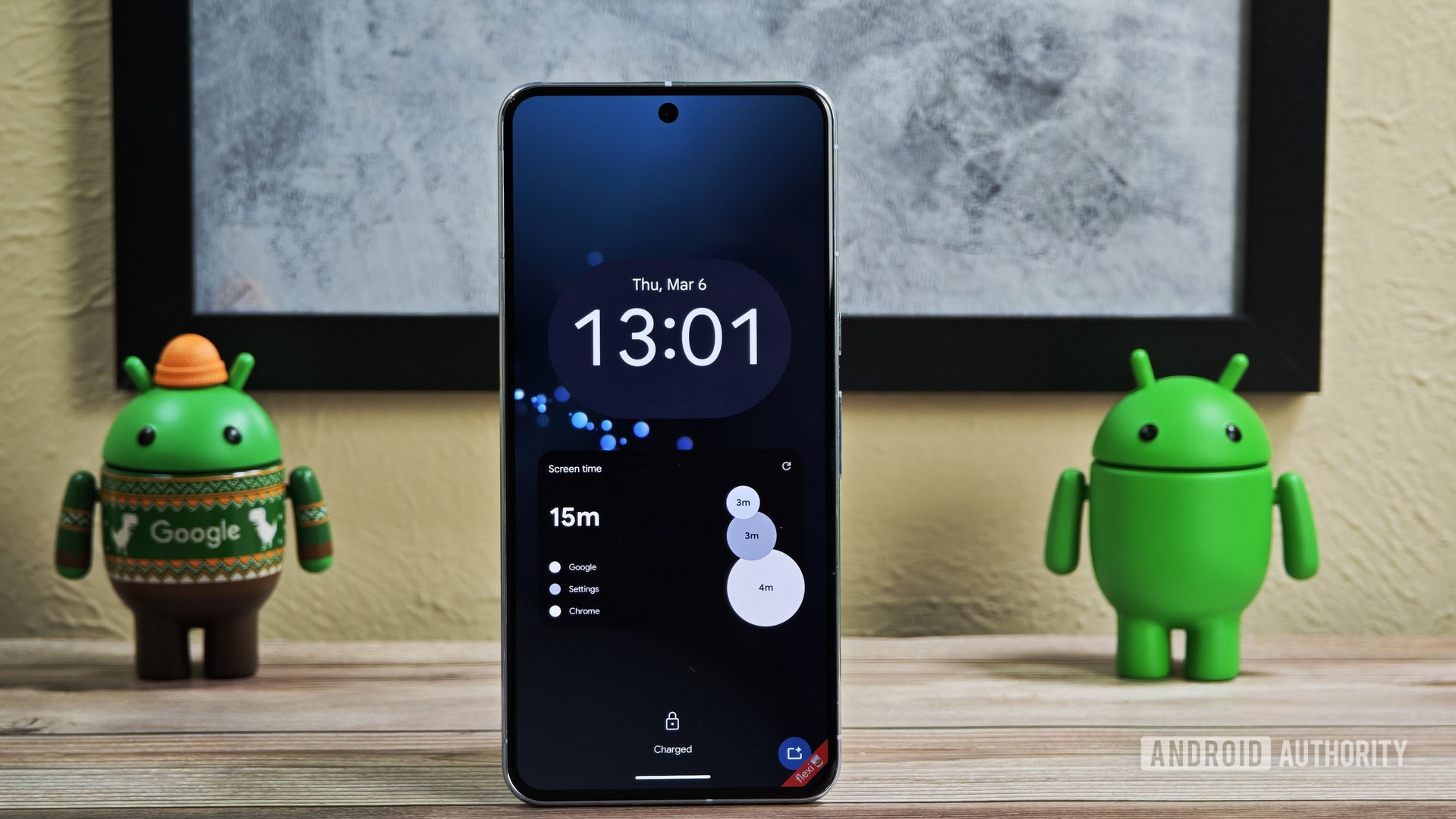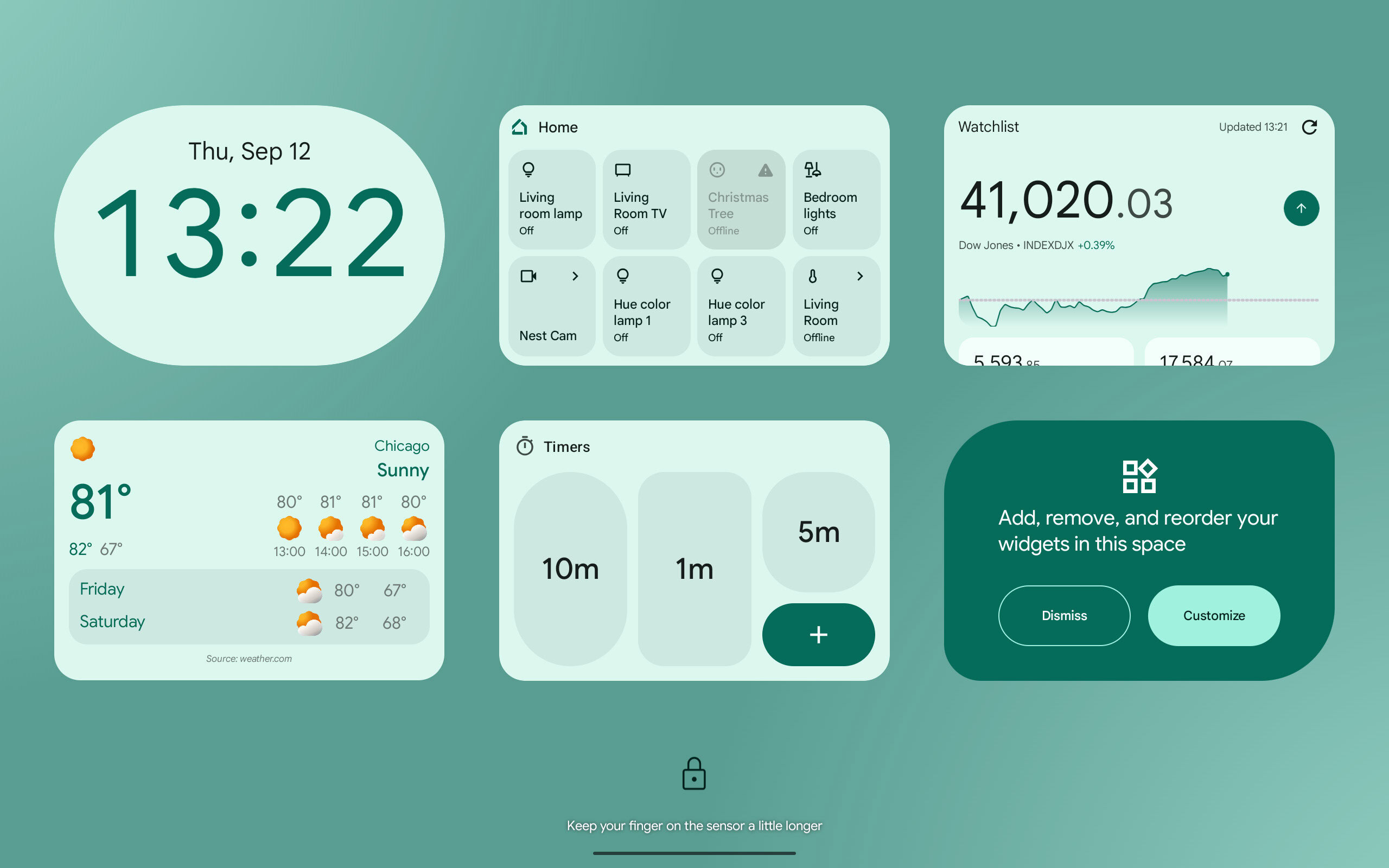
Mishaal Rahman / Android Authority
Tl;
- Google announced today that the upcoming Android 16 QPR1 release will bring the Lock Screen Widget support to phones.
- Android 16 QPR1 is not expected to roll out until September, but we managed to activate the feature ahead of the release to give a first look.
- Locking screen wide on phones may not work quite in the same way as they do on tablets, but this can change before the function of the function.
With the previous Pixel drop, Google introduced the ability to add widgets to the lock screen and bring back a feature it had scrapped almost a decade ago. Unfortunately the company limited the function of Android -St boardLimits the utility. Lucky Android phones In an upcoming Android release, and we managed to activate the feature to give you a first look.
To recreate, reinstated Google Lock screen wide In the first quarterly release of Android 15IE Android 15 QPR1. The company created a dedicated side for widgets called “Glancable Hub”, which is opened by swipe inward from the right edge of the lock screen. The HUB side contains a 2 × 3 grid with widgets that rolls horizontally. The feature is quite useful, as it allows you to easily manage your smart home units, start timers, see important financial information and much more, all together. It would have been great if this feature had also been available for phones; Fortunately, it will be implemented later this year.

Mishaal Rahman / Android Authority
Google mentioned in a blog post that it would bring lock screen to mobile devices in an upcoming Android update. In a Faq About widgets on the locking screen stated Google that “Lock screenwidgets will be available in AOSP (Android Open Source project) for tablets and mobile starting with the release after Android 16 (QPR1). “Android 16 QPR1 will be the first quarterly release of Android 16, and it is scheduled for release” in late summer 2025, “according to Google. Google refers to Android 16 QPR1 internally as the 25Q3 release, which will only contain new features and not any new APIs. Usually Androids Q3 releases fall in September, so Android 16 QPR1 is likely to be released in September 2025.

Android’s timeline overview from 2025 releases
While Google’s blog post contains no actual images of the Lock Screen Widgets feature on phones, we recorded a practical video that demonstrated the feature. Although the feature is not yet live in the last Android 16 Beta 2.1 Release, we could activate it manually.
As you can see in the video built -in below, the lock screen -widgets on phones will work differently than they do on tablets. The 2 × 3 grid seen on tablets is too wide for the narrow views of most phones, so Google’s solution is to view a column with widgets at a time. More importantly, the “glossable hub” cannot access by swipe inward from the right edge of the lock screen, as it is on tablets. Instead it is available by triggers the screen saverThat is, by placing the phone on a charger or laying it. In the future, the screen saver can be triggered by placing the phone upright on a tripod, but this trigger method is not yet available.
Besides the number of widgets shown at a time, the trigger method is the only other difference between the locking screen -Widgets feature on tablets and phones. This may change in the future, although Google is not going to release the feature for months.
When Google releases the feature it will make everything Android -Widgets Available on the lock screen without developer intervention. However, developers must declare android:showWhenLocked="true" To allow widgets launched activities without user approval. They can also prevent certain widgets from appearing on the lock screen completely by setting their categories to “Not Keyguard.”
Google says that OEM can adapt the mechanism to trigger the Lock Screen Widget experience, but not the interface itself. It will be interesting to see which OEMs, if any, adopt Google’s implementation of lock screen wide. I hope that at least some will, as the lock screen is a great place to put widgets. If users benefit from locking screen widows in large numbers, it will only encourage developers to create more high quality widgets, which will be a gain for the Android ecosystem.


